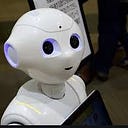Difference between K-Nearest Neighbor(K-NN) and K-Means Clustering
Python Advanced Coding Interview Questions Answers and Explanations
- K-NN is a Supervised machine learning while K-means is an unsupervised machine learning.
- K-NN is a classification or regression machine learning algorithm while K-means is a clustering machine learning algorithm.
- K-NN is a lazy learner while K-Means is an eager learner. An eager learner has a model fitting that means a training step but a lazy learner does not have a training phase.
- K-NN performs much better if all of the data have the same scale but this is not true for K-means.
Imagine you’re hosting a dinner party and need to arrange your guests into groups. For this, you could either pair individuals based on how similar they are or organize them into clusters of mutual interest. This decision mirrors two essential machine learning algorithms: K-Nearest Neighbor (K-NN), which pairs based on proximity and similarity, and K-Means Clustering, which organizes data into distinct groups.
While both techniques involve “K” and a focus on neighbors, they serve vastly different purposes in the world of machine learning. This article explores their fundamental differences, practical applications, and how to use them effectively.
What is K-Nearest Neighbor (K-NN)?
K-NN is a supervised learning algorithm primarily used for classification and regression tasks. It predicts the label of an unseen data point based on the labels of its closest neighbors in the feature space.
- Key Idea: “Birds of a feather flock together.” The assumption is that similar data points belong to the same category.
- How it Works:
- Select the number of neighbors (K).
- Compute the distance (e.g., Euclidean, Manhattan) between the data points.
- Assign the majority label among the K nearest neighbors to the target point.
What is K-Means Clustering?
K-Means is an unsupervised learning algorithm used for grouping or clustering data into distinct clusters based on similarity. Unlike K-NN, it doesn’t require labeled data.
- Key Idea: “Divide and conquer.” Data points within the same cluster are more similar to each other than to those in other clusters.
- How it Works:
- Choose the number of clusters (K).
- Randomly initialize K cluster centroids.
- Assign each data point to the nearest centroid.
- Update the centroids based on the mean of the assigned points.
- Repeat until convergence.
When to Use K-NN vs. K-Means
- K-NN: Use when you have labeled data and need to classify or predict.
- K-Means: Use when you want to explore patterns or groupings in unlabeled data.
Advantages and Limitations
K-NN Advantages
- Simple to implement.
- Effective for smaller datasets.
- Works well with non-linear boundaries.
K-NN Limitations
- Computationally intensive for large datasets.
- Sensitive to irrelevant features and noise.
- Performance depends on the choice of K and distance metric.
K-Means Advantages
- Easy to interpret and implement.
- Scales to large datasets.
- Useful for exploring hidden structures in data.
K-Means Limitations
- Requires predefined K, which may not be optimal.
- Sensitive to outliers and initialization.
- Assumes spherical clusters, which may not always fit the data.
Python Code Examples
K-NN Implementation
from sklearn.datasets import load_iris
from sklearn.model_selection import train_test_split
from sklearn.neighbors import KNeighborsClassifier
from sklearn.metrics import accuracy_score
# Load dataset
data = load_iris()
X, y = data.data, data.target
# Split dataset
X_train, X_test, y_train, y_test = train_test_split(X, y, test_size=0.3, random_state=42)
# Initialize K-NN
knn = KNeighborsClassifier(n_neighbors=3)
knn.fit(X_train, y_train)
# Predict and evaluate
y_pred = knn.predict(X_test)
print("K-NN Accuracy:", accuracy_score(y_test, y_pred))
K-Means Implementation
from sklearn.cluster import KMeans
import matplotlib.pyplot as plt
from sklearn.datasets import make_blobs
# Generate synthetic data
X, _ = make_blobs(n_samples=300, centers=4, random_state=42)
# Initialize and fit K-Means
kmeans = KMeans(n_clusters=4, random_state=42)
kmeans.fit(X)
# Visualize clusters
plt.scatter(X[:, 0], X[:, 1], c=kmeans.labels_, cmap='viridis', marker='o')
plt.scatter(kmeans.cluster_centers_[:, 0], kmeans.cluster_centers_[:, 1], s=200, c='red', marker='x')
plt.title("K-Means Clustering")
plt.show()You may like to watch Neural Network from Scratch in Python
You may like to watch Gradient Descent from Scratch In Python
Applications in the Real World
K-NN Applications
- Healthcare: Diagnosing diseases based on patient similarity.
- E-commerce: Recommending products based on user behavior.
- Finance: Fraud detection by analyzing patterns.
K-Means Applications
- Marketing: Segmenting customers for targeted campaigns.
- Social Media: Grouping users with similar interests.
- Image Processing: Color quantization and image segmentation.
Conclusion
Both K-NN and K-Means are powerful algorithms but serve vastly different purposes in machine learning. While K-NN excels in supervised learning tasks like classification, K-Means is a go-to algorithm for uncovering patterns in unlabeled data.
By understanding their differences, strengths, and weaknesses, you can select the right tool for your specific problem. Whether predicting labels or exploring clusters, these algorithms demonstrate the versatility and power of machine learning in solving real-world challenges.
